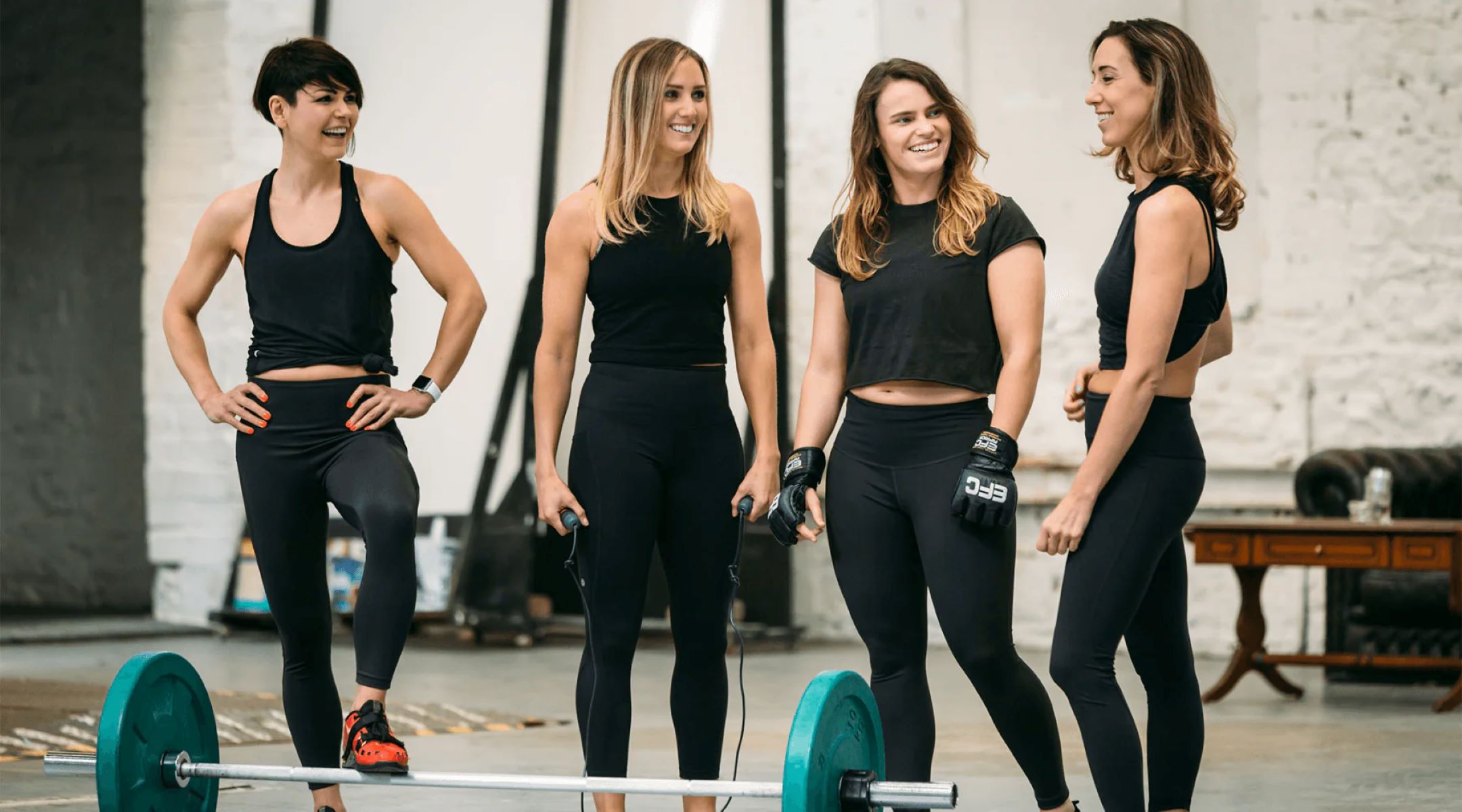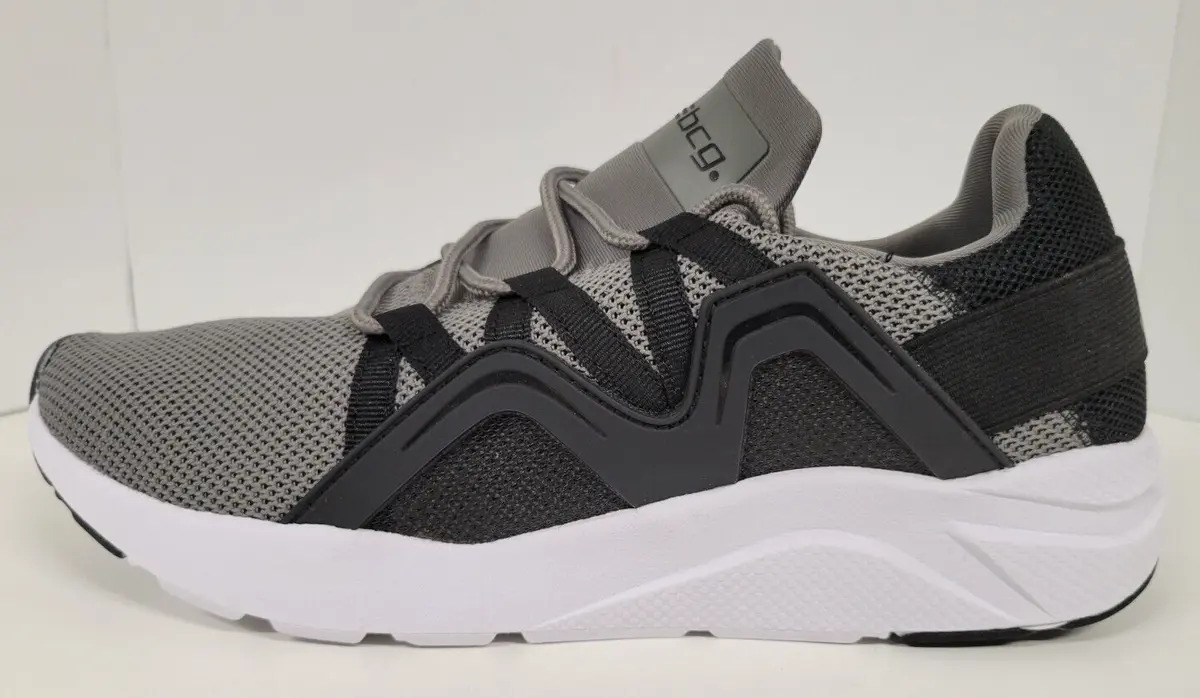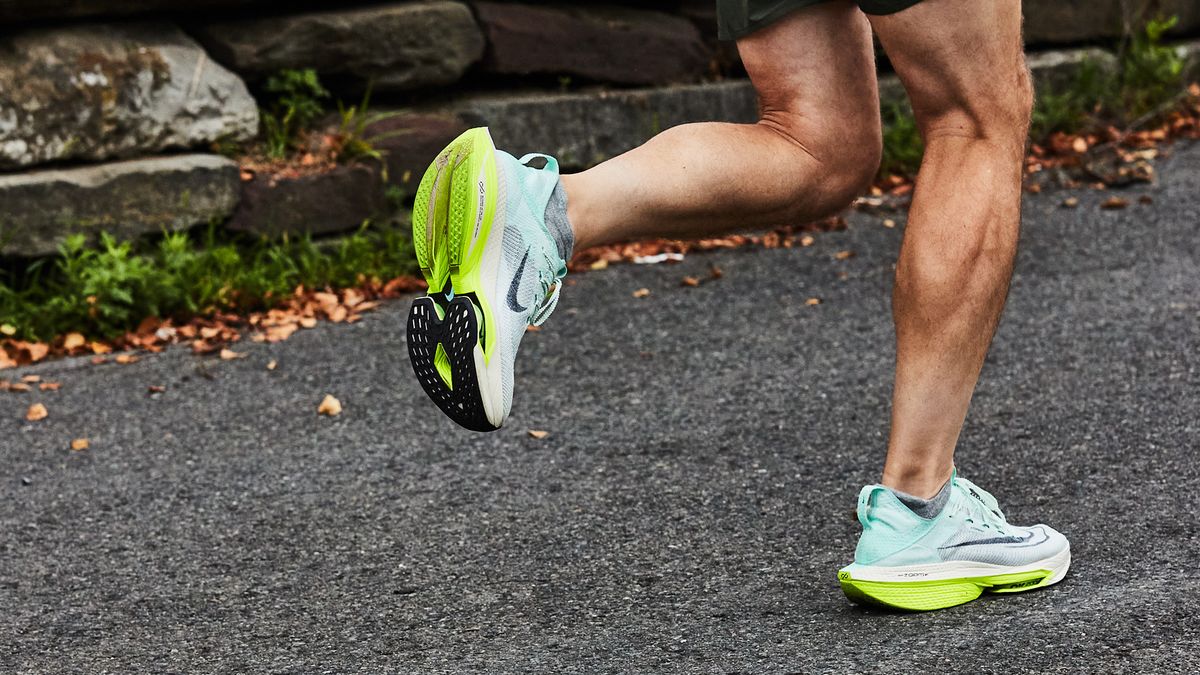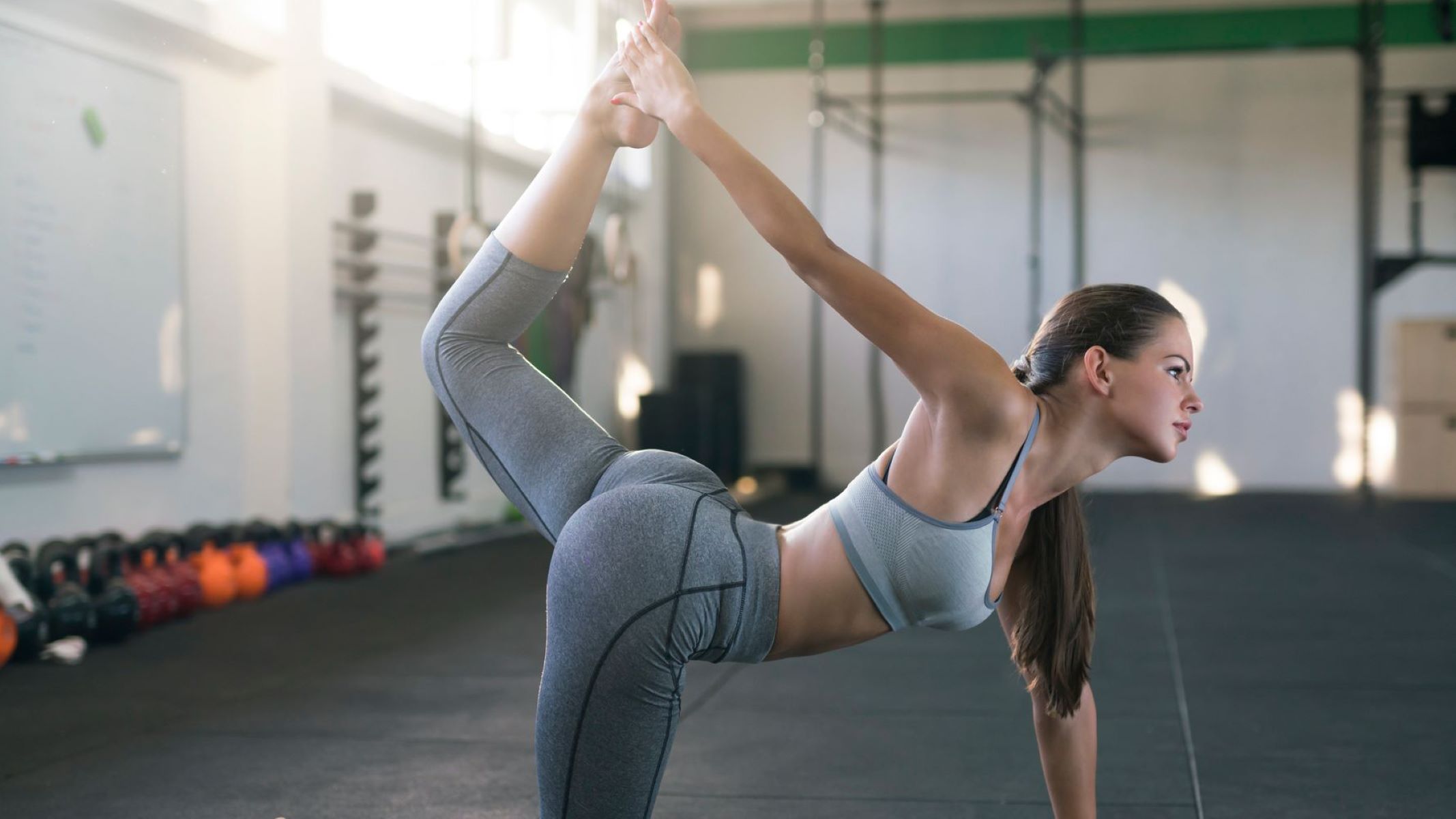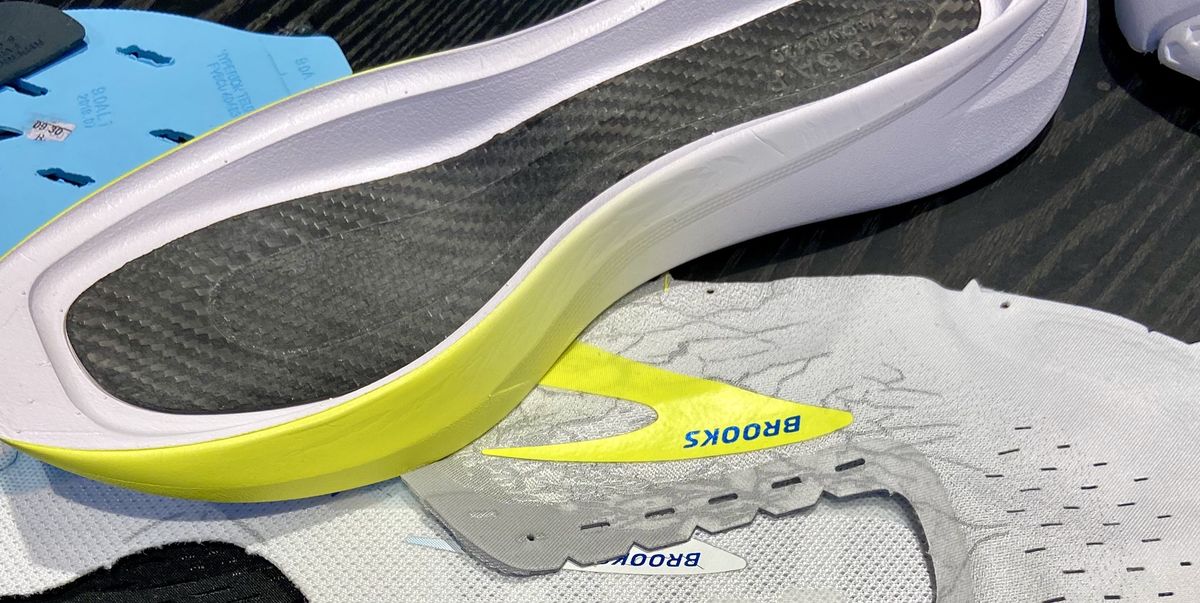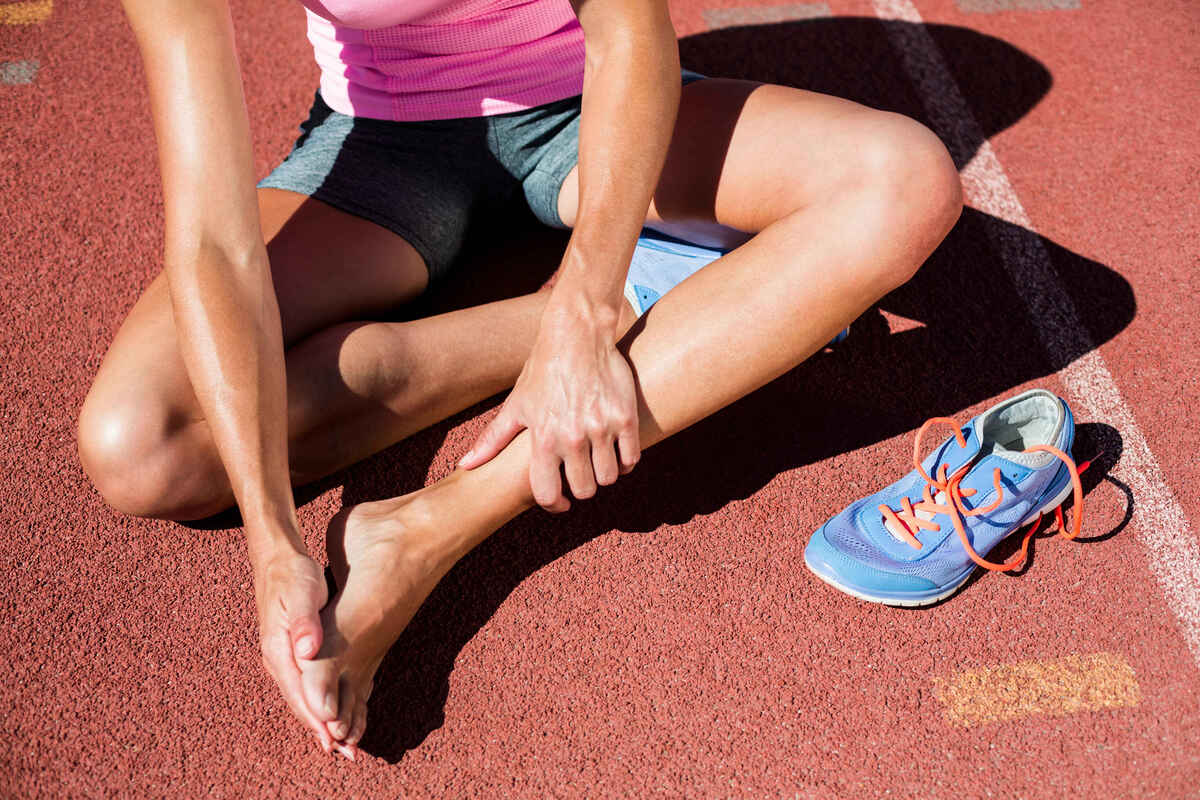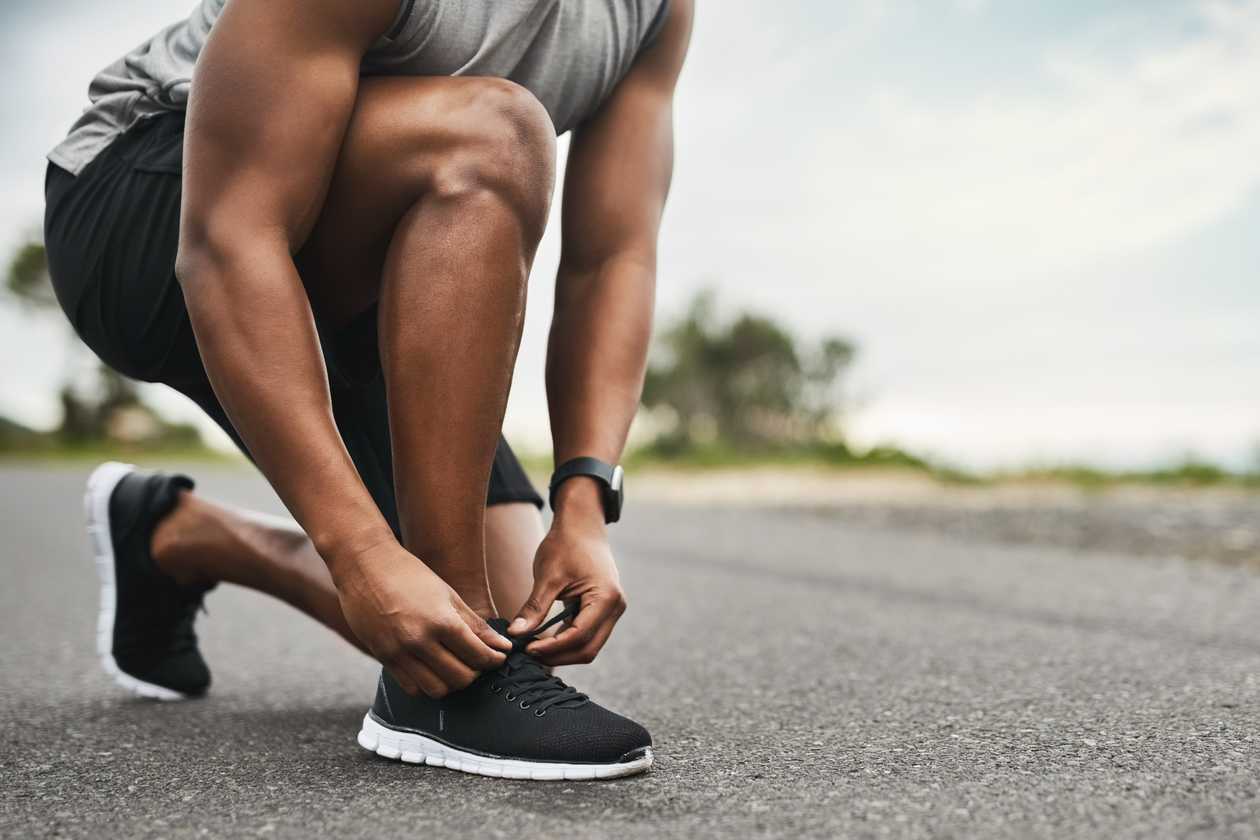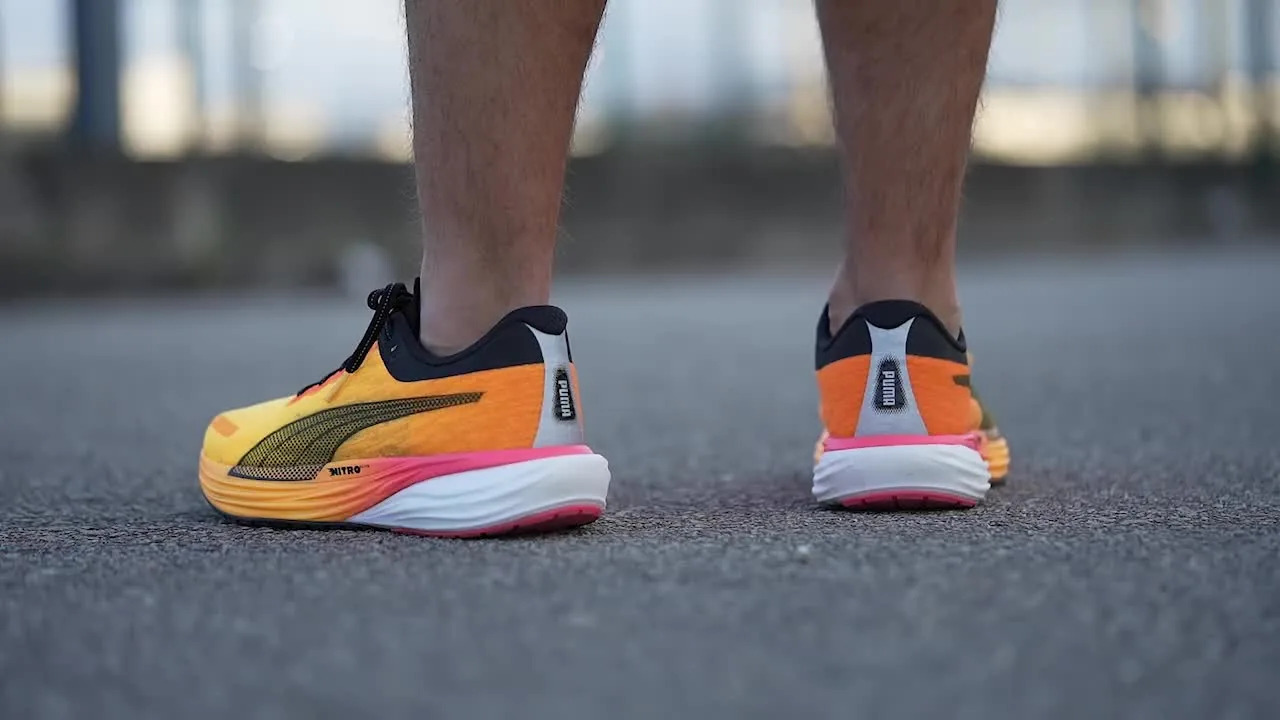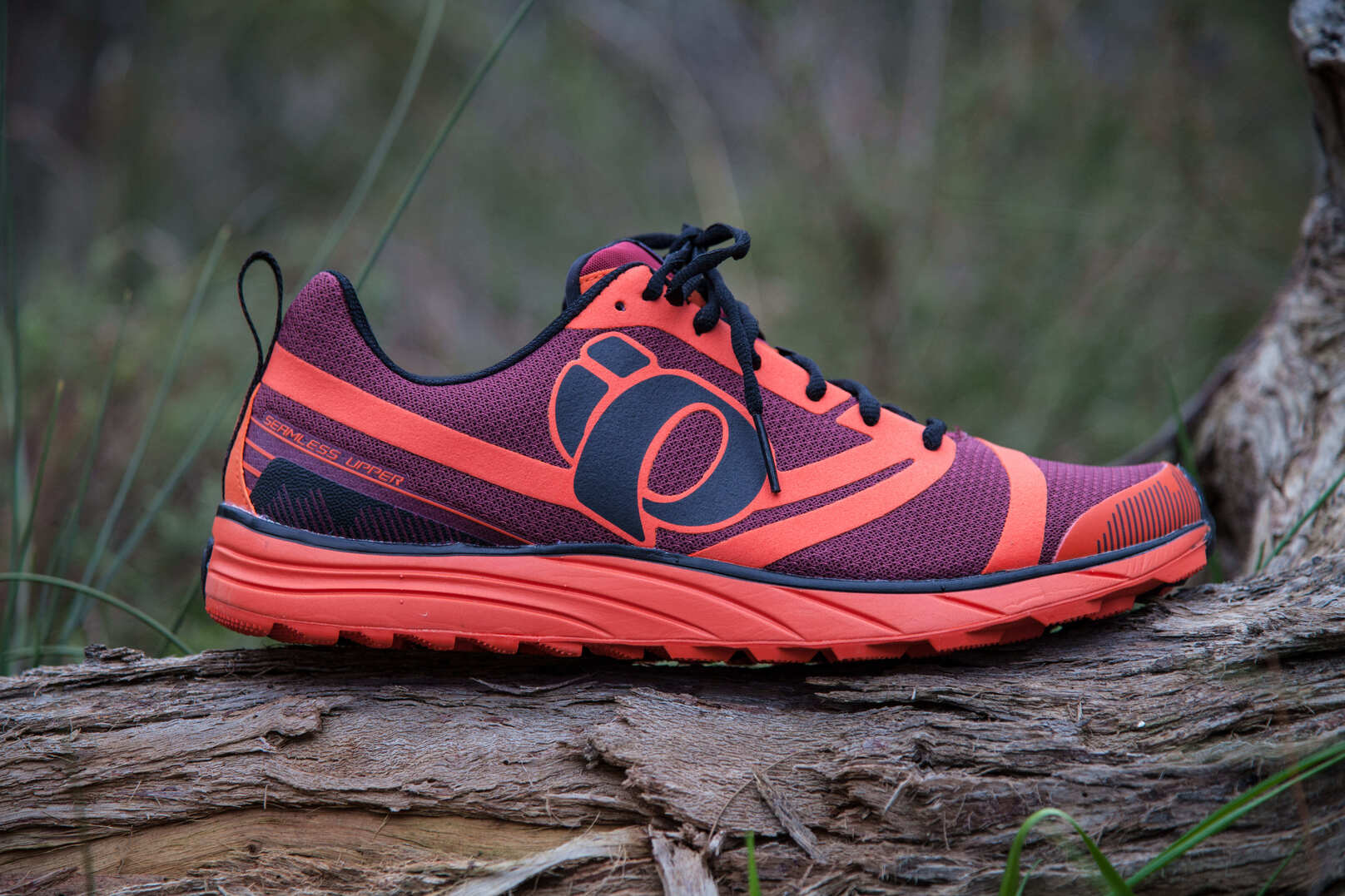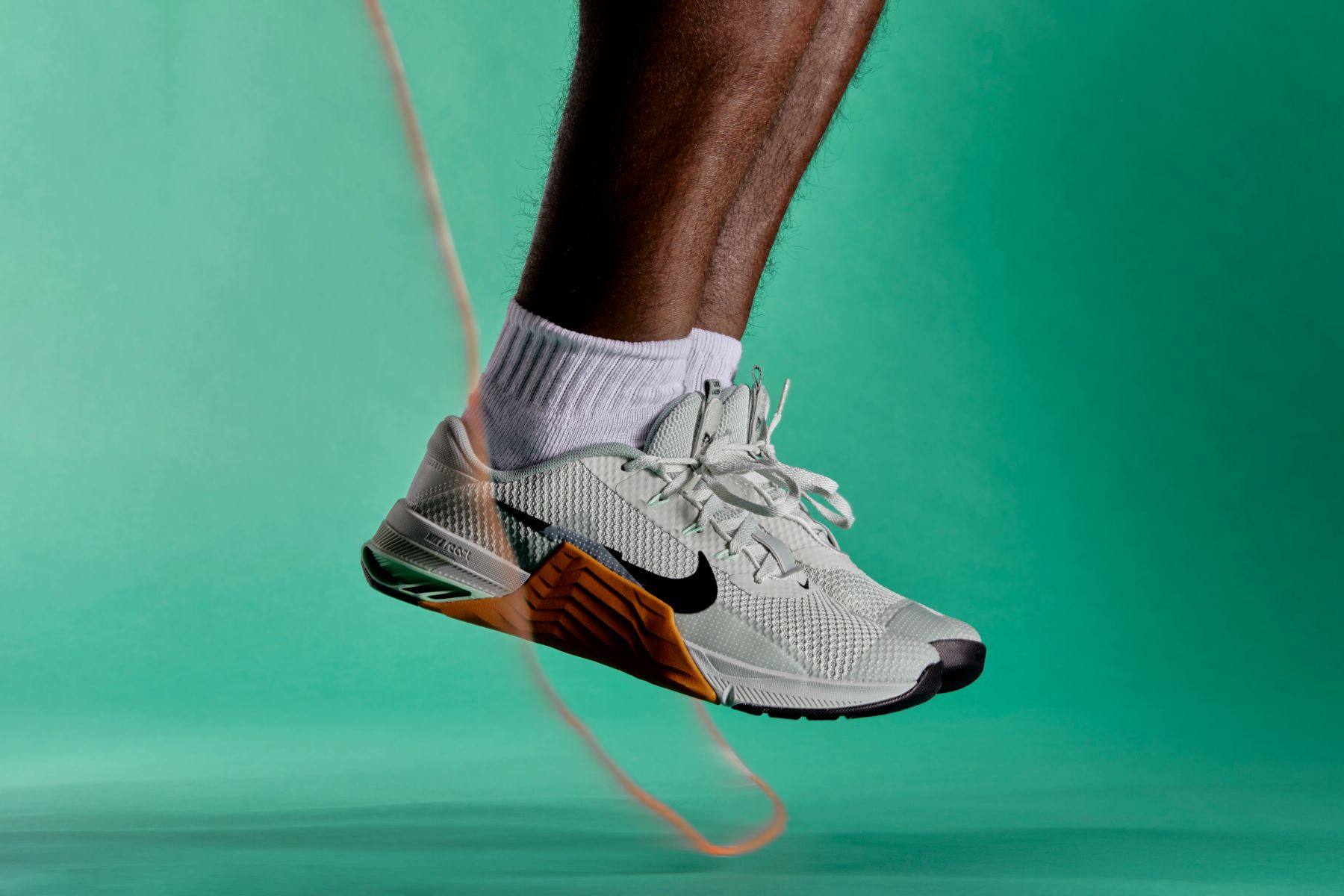

Types
What Are The Best Shoes To Workout In
Modified: January 22, 2024
Looking for the best types of shoes to workout in? Discover our top recommendations for comfortable and supportive footwear that will enhance your exercise routine.
Introduction
When it comes to working out, wearing the right shoes is crucial for both comfort and performance. The shoes you choose can impact your form, stability, and overall workout experience. Whether you’re a runner, cross trainer, weightlifter, or engage in various types of workouts, having the appropriate footwear is essential to maximize your results and prevent injuries.
However, with so many options available in the market, it can be overwhelming to find the best shoes for your specific workout needs. That’s why it’s important to understand the key factors to consider when choosing workout shoes and the different types available for various activities.
In this article, we will explore the importance of wearing the right shoes for workouts and guide you through the factors to consider when selecting the perfect pair. We’ll also delve into the different types of workout shoes available for specific activities like running, cross training, weightlifting, cycling, and HIIT/functional training. By the end, you’ll have a comprehensive understanding of how to choose the best shoes to optimize your workouts and enhance your fitness journey.
Importance of Wearing the Right Shoes for Workouts
Wearing the right shoes for workouts is more than just a matter of style or preference. It plays a crucial role in ensuring your safety, preventing injuries, and improving your overall performance. Here are some key reasons why wearing the right shoes is important:
1. Injury Prevention: The right workout shoes provide the necessary support and cushioning to protect your feet, ankles, and joints from the impact and stress of various movements. They help distribute the force evenly, reducing the risk of sprains, strains, and other injuries during intense workouts.
2. Enhanced Performance: Proper footwear can significantly improve your performance by providing stability, balance, and grip. Shoes designed specifically for your chosen workout activity can optimize your form and allow you to move more efficiently, resulting in better results and accomplishments.
3. Comfort: Wearing shoes that fit well and are designed for your workout type ensures optimal comfort. This means you can focus on your exercises without distractions or discomfort caused by ill-fitting or inappropriate footwear.
4. Support and Stability: Different workouts demand different types of support and stability. For example, running shoes have specialized features to absorb impact and support the foot’s natural motion, while weightlifting shoes have a solid base to provide stability during heavy lifts. Wearing the right shoes ensures proper alignment and reduces the risk of instability-related injuries.
5. Durability: Workout shoes are designed to withstand the demands of specific activities, making them more durable than regular sneakers. The materials, construction, and reinforcements used in workout shoes are tailored to withstand the repetitive movements and stress associated with workouts, ensuring they last longer and provide reliable performance.
6. Hygiene: Investing in proper workout shoes not only benefits your safety and performance but also contributes to good foot hygiene. High-quality shoes are designed with advanced materials and ventilation systems that help prevent excessive moisture, odor, and the growth of harmful bacteria, keeping your feet fresh and healthy.
In summary, wearing the right shoes for workouts is crucial to prevent injuries, improve performance, and enhance your overall experience. By choosing shoes that provide adequate support, cushioning, stability, and durability, you can optimize your workouts, push your limits, and achieve your fitness goals with confidence.
Factors to Consider When Choosing Workout Shoes
When selecting workout shoes, it’s important to consider several key factors to ensure you find the perfect fit for your needs. Here are some factors to keep in mind:
1. Shoe Type: Different types of workouts require specific shoe types. Running shoes are designed for forward motion and cushioning, while cross-training shoes offer versatility for various activities. Weightlifting shoes have a stable base, and cycling shoes are optimized for pedaling efficiency. Determine the type of workouts you primarily engage in to narrow down your options.
2. Fit: Finding the right fit is crucial for comfort and optimal performance. Ensure your shoes have enough room for your toes to wiggle and that they are snug around your heel. A proper fit prevents slipping, blisters, and discomfort during movements.
3. Arch Support: Consider the arch support provided by the shoes. Flat-footed individuals may require shoes with more arch support, while those with high arches need shoes with cushioning and flexibility. Opt for shoes that match your foot’s natural arch to avoid discomfort and potential injuries.
4. Cushioning: The level of cushioning needed depends on the impact of your chosen workout. Running shoes typically have more cushioning to absorb shock, while weightlifting shoes have minimal cushioning for stability. Choose shoes with appropriate cushioning to prevent joint pain and minimize the risk of injury.
5. Stability: Activities that involve lateral movements, such as cross-training or HIIT, require shoes with good lateral stability. Look for shoes that provide support on the sides to prevent ankle rolling and improve overall stability during dynamic movements.
6. Breathability: Sweaty feet can lead to discomfort, blisters, and odor. Look for shoes with breathable materials and ventilation features to allow air circulation and keep your feet cool and dry during intense workouts.
7. Durability: Consider the durability of the shoes, especially if you engage in high-impact or repetitive exercises. Look for high-quality materials and sturdy construction to ensure your shoes can withstand the demands of your workouts over time.
8. Price: While it’s important to invest in good-quality workout shoes, price is also a significant factor for many. Determine your budget range and look for shoes that offer the best combination of features, durability, and value within that range.
By considering these factors, you can narrow down your options and find workout shoes that not only meet your specific needs but also provide the comfort, support, and durability required to enhance your performance and reduce the risk of injuries.
Different Types of Workout Shoes
When it comes to workout shoes, there are various types available, each designed to cater to specific activities. Understanding the different types can help you make an informed decision based on your workout preferences. Here are some common types of workout shoes:
1. Running Shoes: Running shoes are specially designed for the repetitive forward motion of running. They offer cushioning to absorb impact, flexibility to accommodate the foot’s natural movement, and breathability to keep your feet cool during long runs. Look for running shoes that provide adequate support and stability for your foot type and gait.
2. Cross Training Shoes: Cross training shoes are versatile options that can be used for a range of activities. They are designed to support lateral movements, provide stability, and offer a balance between cushioning and flexibility. These shoes are suitable for activities like weightlifting, cardio exercises, and circuit training.
3. Weightlifting Shoes: Weightlifting shoes are specifically designed to enhance stability and provide a solid base for weightlifting exercises. They typically have a raised heel, which allows for better squatting and lifting mechanics. These shoes offer a secure fit, improved ankle support, and a non-compressible sole to maximize power transfer during lifts.
4. Cycling Shoes: Cycling shoes are designed specifically for indoor or outdoor cycling. They feature a stiff sole that optimizes power transfer to the pedals while providing a secure fit. Cycling shoes often come with cleats that attach to the pedals, allowing for a more efficient pedaling motion and preventing foot slippage.
5. HIIT/Functional Training Shoes: HIIT (High-Intensity Interval Training) and functional training shoes are designed to support dynamic movements, including lateral movements, jumps, and quick direction changes. They offer good traction, stability, and cushioning to handle the high-impact nature of these workouts. These shoes often have features like reinforced uppers or supportive overlays to prevent injuries during fast-paced workouts.
Keep in mind that some shoe brands may offer variations within each category to cater to specific needs. For example, within running shoes, you will find options for neutral runners, overpronators, or those who require motion control. It’s essential to try on different brands and models to find the shoe that best suits your individual foot shape, pronation, and workout requirements.
By choosing the right type of workout shoe for your specific activities, you can ensure that you are providing your feet with the support, cushioning, and stability they need to perform at their best and reduce the risk of strain, discomfort, and injuries.
Running Shoes
Running shoes are specifically designed to provide optimal support and cushioning for the repetitive and high-impact motions involved in running. Whether you’re a seasoned runner or just starting out, having the right pair of running shoes can significantly enhance your running experience. Here are some key features to consider when choosing running shoes:
1. Cushioning: Running shoes often have various levels of cushioning to absorb shock and reduce the impact on your joints. The amount of cushioning required depends on your running style, body weight, and personal preference. Some runners prefer more cushioning for long-distance runs, while others prefer a more minimalistic feel for faster-paced runs.
2. Support: Running shoes come with different levels of support to accommodate different foot arch types and running styles. Neutral shoes offer a balance of cushioning and support for runners with neutral pronation. Stability shoes provide additional support to help correct overpronation, while motion control shoes are designed for severe overpronation. Determine your foot type and consult with a specialist to find the right level of support for your needs.
3. Breathability: Look for running shoes with breathable materials and mesh panels to allow for proper airflow. This helps keep your feet dry and cool during runs, reducing the risk of discomfort and blisters caused by excessive moisture.
4. Fit and Comfort: Finding a running shoe that fits well is essential for comfort and performance. Ensure adequate room in the toe box to prevent cramping or pressure on your toes. The shoe should feel snug but not overly tight around your midfoot and heel to provide stability and prevent slipping during runs. Consider trying different brands and models to find the perfect fit for your feet.
5. Traction: The outsole of running shoes should provide good traction on various surfaces, including pavement, trails, or tracks. Look for shoes with durable rubber outsoles and multidirectional tread patterns that offer reliable grip and stability on different terrains.
6. Flexibility: Running shoes should have a certain level of flexibility to allow for a natural range of motion as your foot strikes the ground. This helps promote a smooth gait and reduces the strain on your joints. However, the level of flexibility needed may vary depending on your running style and personal preference.
7. Durability: Running shoes should be durable enough to withstand the rigors of regular running, especially if you’re planning to put in a lot of mileage. Look for durable materials in both the upper and sole construction to ensure longevity.
Remember that everyone’s feet are unique, and what works for someone else may not work for you. It’s essential to try on multiple brands and models, and even consider getting a gait analysis or seeking advice from a professional shoe fitter to find the running shoes that are best suited to your specific needs.
By investing in a quality pair of running shoes that provide the right amount of cushioning, support, fit, and comfort, you can minimize the risk of injuries, improve your performance, and enjoy a more enjoyable and fulfilling running experience.
Cross Training Shoes
Cross training shoes are versatile footwear designed to support a wide range of activities, making them a popular choice for individuals who engage in various types of workouts. These shoes offer a balance of cushioning, stability, and flexibility to cater to the diverse movements involved in activities like weightlifting, cardio exercises, and circuit training. Here are some key features to consider when selecting cross training shoes:
1. Versatility: Cross training shoes are designed to be versatile and cater to different types of workouts. They are suitable for activities like weightlifting, short-distance running, HIIT, and agility training. The versatility of these shoes allows you to transition between different exercises without having to switch footwear.
2. Cushioning and Shock Absorption: Cross training shoes typically offer moderate cushioning to provide support and shock absorption during dynamic movements. The cushioning should be responsive enough to handle the impact of jumps and quick changes in direction, while still providing adequate stability for weightlifting exercises.
3. Support and Stability: Cross training shoes provide a supportive fit that helps prevent ankle rolls and maintain stability during lateral movements. They often feature a low-profile design and supportive overlays to keep your feet secure and stable during multidirectional exercises.
4. Flexibility: Cross training shoes strike a balance between flexibility and support. They should be flexible enough to allow for a natural range of motion during exercises like lunges or burpees, ensuring optimal performance and reducing the risk of strain or injury.
5. Durability: Since cross training involves a wide range of movements and activities, it’s important to choose shoes that are durable and can withstand the demands of different workouts. Look for shoes with reinforced construction and durable materials in high-wear areas to ensure longevity.
6. Traction: Cross training shoes should provide reliable traction to prevent slipping or sliding during various exercises. They typically feature outsoles with multidirectional patterns or grip-enhancing technology to offer stability and traction on different surfaces.
7. Breathability: Sweaty feet can be a common issue during intense workouts. Look for cross training shoes with breathable materials and ventilation features to allow air circulation and keep your feet cool and dry. This helps prevent odor and discomfort caused by excessive moisture.
When selecting cross training shoes, it’s important to consider your specific workout needs and preferences. Different brands and models may offer variations in terms of cushioning, support, and overall design. Trying on different options and considering factors like fit, comfort, and specific workout requirements can help you find the cross training shoes that best suit your needs.
By investing in a quality pair of cross training shoes, you can enjoy the versatility, support, and durability necessary to excel in a variety of workouts and activities, ensuring you can train with confidence and reach your fitness goals.
Weightlifting Shoes
Weightlifting shoes are specially designed to provide stability, support, and optimal performance during weightlifting exercises. These shoes are a valuable tool for weightlifters of all levels, from beginners to advanced athletes. Here are some key features to consider when selecting weightlifting shoes:
1. Solid Base and Heel Support: Weightlifting shoes typically have a solid and flat sole to provide a stable base during lifts. They often feature an elevated heel, usually made of hard plastic or wood, to improve ankle mobility and allow for proper squatting mechanics. The heel height can vary, so choose a height that suits your individual needs and preferences.
2. Stability and Support: Weightlifting shoes are designed to provide excellent lateral stability and support. They have a firm upper construction and supportive straps or laces to ensure your feet are secure and stable throughout your lifts. This helps maintain proper positioning and alignment, reducing the risk of injury and improving your lifting performance.
3. Enhanced Power Transfer: The solid base and elevated heel of weightlifting shoes improve power transfer during lifts. This means that more energy generated by your legs can be efficiently transmitted through the shoes to the floor, resulting in better overall lifting performance.
4. Durability: Weightlifting shoes need to be durable as they are often subjected to heavy loads and repetitive movements. Look for shoes made from high-quality materials, sturdy construction, and reinforced areas to ensure they can withstand the demands of weightlifting.
5. Proper Fit: Like any other athletic shoe, weightlifting shoes should fit snugly but comfortably. They should provide ample space for your toes to wiggle, while also securing your foot to prevent slippage during lifts. Pay attention to the width and straps/laces of the shoe to ensure a proper and secure fit.
6. Ventilation: Weightlifting shoes can get hot and sweaty during intense workouts. Look for shoes with breathable materials and ventilation features to allow air circulation and keep your feet cool. Proper ventilation helps to reduce moisture build-up and potential odor issues.
Weightlifting shoes are specifically designed to optimize your lifting performance and improve your safety during weightlifting exercises. Whether you’re performing squats, deadlifts, or Olympic lifts, investing in a pair of weightlifting shoes can greatly enhance your stability, form, and overall lifting experience.
Remember, the right weightlifting shoe for you depends on your individual needs, lifting style, and preferences. It’s important to try on different brands and models to find the shoe that offers the best combination of fit, stability, and support that suits your unique requirements.
By selecting the right weightlifting shoes, you can enhance your lifting technique, maximize your results, and minimize the risk of injury, allowing you to lift with confidence and reach your weightlifting goals.
Cycling Shoes
Cycling shoes are specifically designed to optimize performance and efficiency during indoor or outdoor cycling. These shoes play a crucial role in connecting your feet to the pedals, allowing for better power transfer and control. Here are some key features to consider when selecting cycling shoes:
1. Stiff Sole: Cycling shoes have a stiff sole that helps to maximize power transfer from your legs to the pedals. A rigid sole prevents energy loss by minimizing flex and ensuring all your effort goes into propelling the bike forward.
2. Cleats and Pedal Compatibility: Cycling shoes often come with cleats that attach to the pedals. It’s essential to check the compatibility of the shoe’s cleats with your specific pedal system. Different pedal systems, such as SPD, SPD-SL, or Look, require specific cleats that may be included or sold separately.
3. Secure Closure System: Cycling shoes typically feature a secure closure system such as Velcro straps, ratcheting buckles, or BOA dials. A reliable closure system ensures a snug and secure fit, preventing any foot movement inside the shoe and maximizing power transmission to the pedals.
4. Ventilation: Cycling shoes often have perforations or mesh panels to enhance breathability and airflow. This helps to keep your feet cool and dry during long rides, minimizing discomfort and the risk of blisters or hot spots.
5. Comfortable Fit: Finding a cycling shoe with a comfortable fit is essential, especially for longer rides. Look for shoes with ample toe box room to prevent numbness and allow for natural foot movement. The shoe should also provide adequate arch support and a secure heel grip to minimize pressure points and enhance stability.
6. Walkability: Depending on your cycling needs, consider the level of walkability you require. Road cycling shoes tend to have a more rigid sole, making walking challenging. However, if you plan on doing a mix of cycling and walking, consider shoes with a slightly more flexible sole and a tread pattern for improved grip.
Remember to consider your specific cycling discipline and personal preferences when selecting cycling shoes. Road cyclists may prioritize lightweight and aerodynamic designs, while mountain bikers may require shoes with extra grip and durability.
It’s recommended to try on various brands and models, and even consult with cycling experts, to find the cycling shoes that provide the best combination of fit, comfort, performance, and compatibility with your pedal system. Having the right cycling shoes can greatly enhance your cycling experience, power output, and overall efficiency on the bike.
HIIT/Functional Training Shoes
HIIT (High-Intensity Interval Training) and functional training involve a wide range of dynamic movements, including jumps, agility drills, and quick direction changes. To perform these activities safely and effectively, it’s important to wear shoes specifically designed for HIIT and functional training. Here are some key features to consider when selecting HIIT/functional training shoes:
1. Stability and Support: HIIT/functional training shoes provide excellent lateral stability to support quick changes in direction and side-to-side movements. Look for shoes with a supportive upper construction that keeps your feet secure during high-impact exercises.
2. Cushioning and Shock Absorption: These shoes should offer cushioning and shock absorption to protect your joints during jumps and plyometric movements. The cushioning should be responsive, providing energy return to enhance your performance without sacrificing stability.
3. Grip and Traction: HIIT/functional training shoes should have a grippy outsole that provides traction on various surfaces. This ensures you have secure footing during agility drills, ladder drills, or any other exercises that involve quick footwork.
4. Flexibility: Look for shoes that offer flexibility in the forefoot to allow for natural foot movement during jumping and agility exercises. This flexibility helps with balance and agility and reduces the risk of strain or injury.
5. Breathability: HIIT/functional training can be intense and result in sweaty feet. Opt for shoes with breathable materials and ventilation features to allow air circulation and keep your feet cool and dry. This helps prevent discomfort and reduces the risk of developing odors.
6. Durability: Since HIIT/functional training often involves high-impact movements and repetitive exercises, it’s essential to choose shoes that can withstand the demands of these activities. Look for shoes with durable materials and reinforced areas to ensure longevity.
7. Lightweight and Minimalistic Design: Many HIIT/functional training shoes feature a lightweight and minimalistic design to provide a close-to-the-ground feel and ensure freedom of movement. This design allows for quick transitions between exercises without feeling weighed down by heavy shoes.
When choosing HIIT/functional training shoes, consider your specific workout needs and preferences. Different brands and models may offer variations in terms of cushioning, stability, flexibility, and overall design. Trying on different options and considering factors such as fit, comfort, and specific workout requirements can help you find the shoes that best suit your needs.
By selecting the right HIIT/functional training shoes, you can enhance your performance, minimize the risk of injuries, and optimize your agility and quickness during high-intensity workouts.
Factors to Consider for Specific Workouts
While the general factors mentioned earlier apply to most workout shoes, specific activities may have additional factors to consider. Here are some key factors to keep in mind for different types of workouts:
1. Running: For running, in addition to cushioning, support, and fit, it’s important to consider factors such as the type of running surface (road, trail, or track) and the distance you typically run. Trail running shoes, for example, may have more aggressive traction to handle uneven terrain, while long-distance runners may need more cushioning for added comfort during extended runs.
2. Cross Training: Cross training involves a mix of exercises, so versatility is crucial. Look for shoes that provide stability for weightlifting, flexibility for agility exercises, and cushioning for cardio activities. Shoes with a low-profile design and supportive overlays are ideal for multidirectional movements.
3. Weightlifting: When it comes to weightlifting, stability and solid heel support are paramount. Look for shoes with a flat and non-compressible sole that provide a stable base for heavy lifts. An elevated and solid heel helps achieve proper squat depth and improves lifting mechanics.
4. Cycling: Cycling shoes should be compatible with your pedal system, and the fit of the shoe is crucial to prevent any discomfort or hot spots during long rides. Consider the type of cycling you engage in—road, mountain biking, or indoor cycling—when choosing shoes as they have different requirements in terms of stiffness, grip, and ventilation.
5. HIIT/Functional Training: HIIT and functional training involve dynamic movements, so stability, support, and grip are important. Look for shoes with lateral stability, cushioning, and a flexible forefoot for quick changes in direction and agility exercises. A grippy outsole is crucial to prevent slipping during fast-paced movements.
Remember that while these factors are important, every individual is unique, and some personal preferences may influence your shoe selection. Trying on different shoes, consulting with experts, and considering the specific demands of your chosen workouts can help you find the perfect pair for each activity.
By considering the specific factors for different types of workouts, you can ensure that your shoes cater to the specific demands of each activity, enabling you to perform your best and achieve your fitness goals safely and effectively.
Conclusion
Choosing the right shoes for your workouts is essential for comfort, performance, and safety. Whether you’re a runner, cross trainer, weightlifter, cyclist, or engage in HIIT/functional training, selecting the appropriate pair of workout shoes can greatly enhance your fitness journey.
Considering factors such as shoe type, fit, cushioning, support, stability, breathability, durability, and traction will help guide you towards the shoes that best align with your specific workout needs. Understanding the different types of shoes available for various activities, such as running shoes, cross training shoes, weightlifting shoes, cycling shoes, and HIIT/functional training shoes, allows you to narrow down your options and find the perfect fit.
Remember that everyone’s feet are unique, and what works for one person may not work for another. It’s important to try on different brands and models, and even seek expert advice or gait analysis if necessary, to find the shoes that provide the best combination of fit, support, and performance for your individual needs.
By wearing the right shoes for your workouts, you can prevent injuries, improve your performance, and enhance your overall fitness experience. The right shoes provide the necessary support, cushioning, stability, and durability to help you reach your fitness goals with confidence and comfort.
So, as you embark on your fitness journey, take the time to evaluate your workout needs, consider the factors mentioned, and choose the shoes that will support and enhance your performance in each activity. Invest in quality workout shoes that fit well and cater to the specific demands of your chosen workouts. Your feet will thank you as you push your limits, achieve new milestones, and enjoy the benefits of a safe and effective workout routine.
